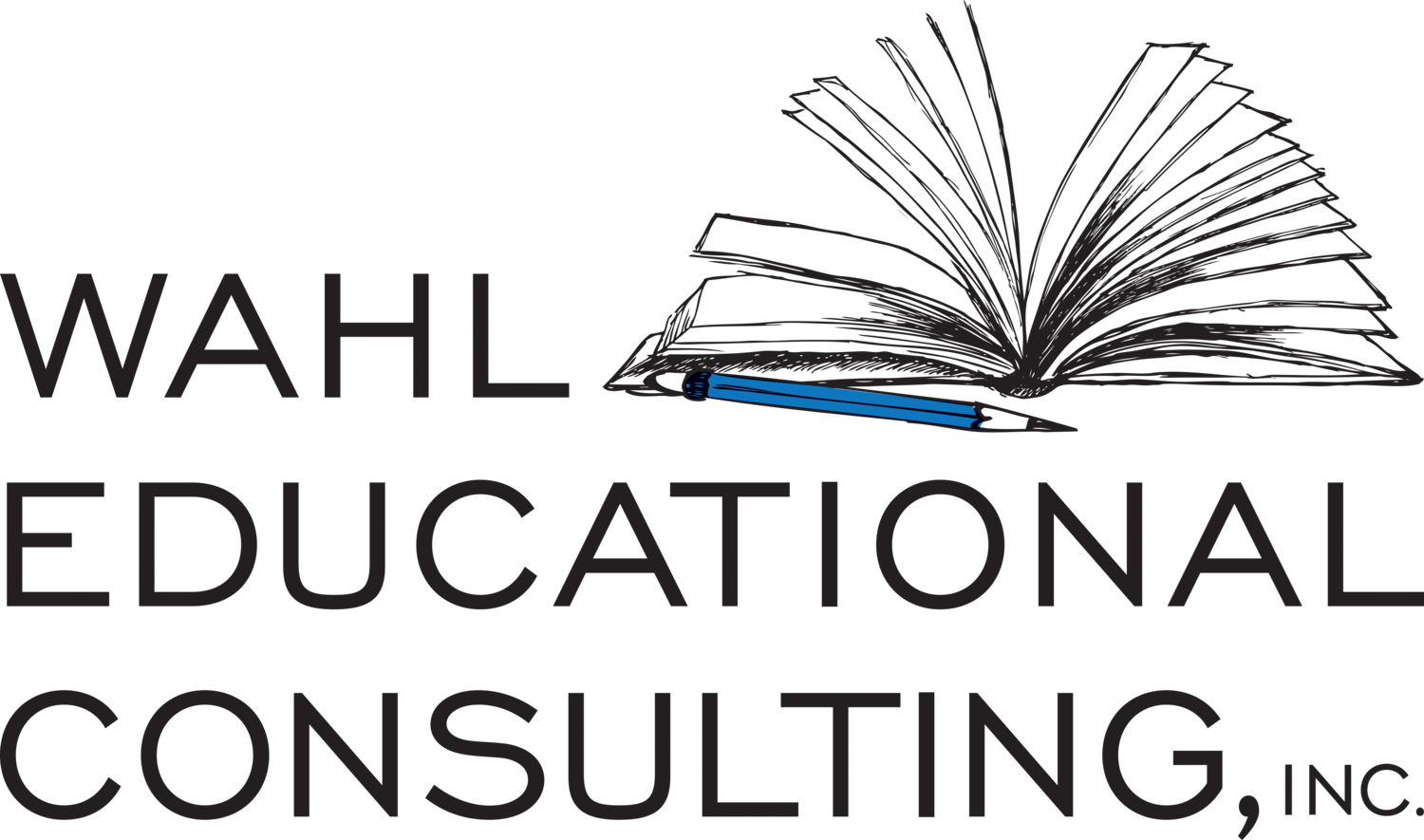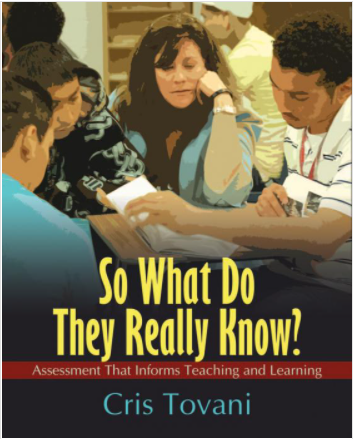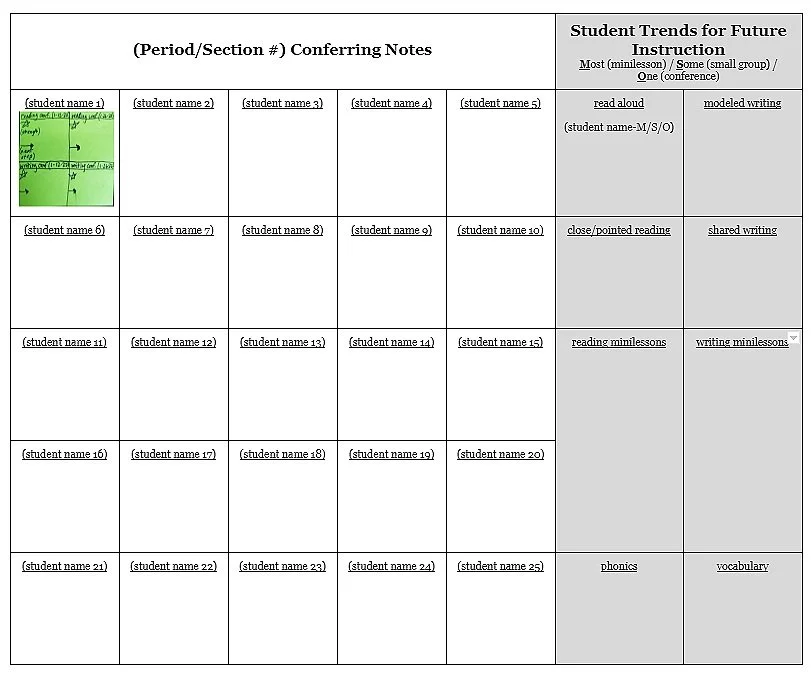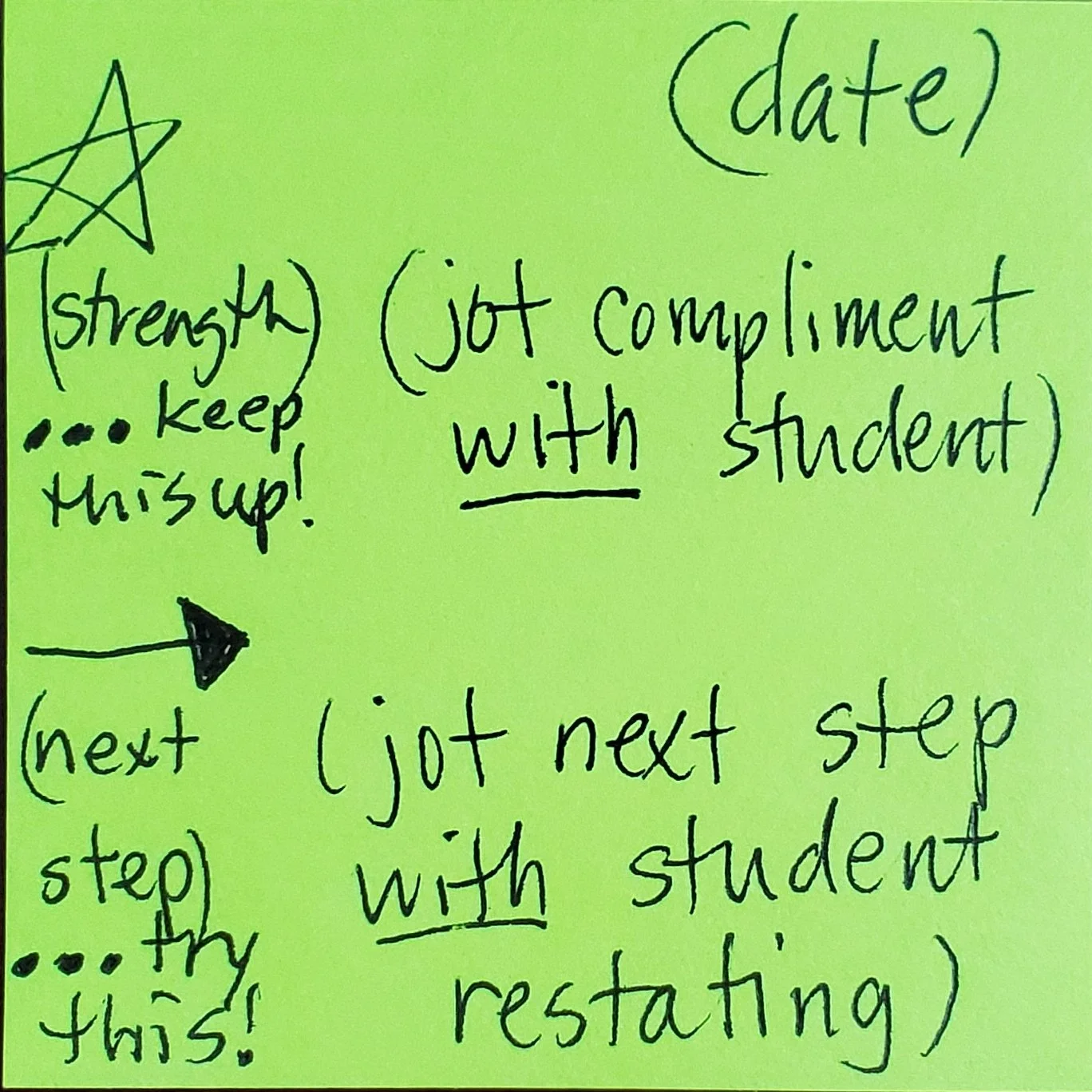conferring with readers & Writers
Conferring is one of the most impactful ways to get to know each student’s strengths and needs while also informing future instruction. Teachers move around the room as they confer, meeting several students over the course of a period while other students work independently. My conferring practices with middle and high school learners are based on learning from Cris Tovani and her book, So What Do They Really Know? Assessment That Informs Teaching and Learning. Cris explains, “...conferring during the work time is an opportune moment to assess and give feedback. However, conferring is a lot more than simply monitoring the room.” She goes on to clarify that “…assessment alone will not improve achievement. Students also need targeted feedback to improve.”
Like Cris, I see conferring as a moment to provide learners with what they need. My conferring evolves with students over the year. In the beginning of the year, my conferences often focus on habits and modeling different ways for them to approach their texts or writing. Later, my students understand the predictable structure of our conferences and are able to tell me what their perceived needs are as soon as we begin our conversations. When students own their learning, they are more likely to embrace the feedback we provide and use that feedback to determine their next steps independently.
I also appreciate Kelly Gallagher and Penny Kittle’s perspectives on conferring, shared in their book, 180 Days: Two Teachers and the Quest to Engage and Empower Adolescents. When it comes to reading, Kelly and Penny “model things they may track while reading books: a character’s development, a big idea that is emerging, their confusion, interesting rhetorical decisions made by the writer (reading like a writer), and literary elements (e.g., symbolism, setting, conflict). We show students the things we think about in the books we read. Reading is for discovery and growth: a student should leave a conference feeling stronger, empowered to discover more in reading without us.”
When it comes to conferring with writers, Kelly and Penny “teach ways of working with ideas that lead to joy and satisfaction: planning, organizing, and playing with structure or individual sentences. As the room quiets, many students learn to think about writing in expansive ways by listening to us problem-solve in conferences.”
choosing and designing your conferring system
Some questions to consider as you develop and revise your conferring system:
Is my record keeping system portable?
Does my system allow me to track individual student progress over time?
Does my system allow me to track period/section progress over time?
Can I easily track students that I have and have not conferred with?
How and when do I reflect on the trends that I’ve noticed and noted to impact and adjust my upcoming whole group (most), small group (some) and conferring (one-on-one) instruction?
How does my system allow for communication between colleagues that are also supporting my students?
Using an 11”x14” version of the graphic below (a new page for each period/section) has been the most effective system I have found. I keep my students’ reading and writing conference notes on the same “period/section #” page and their names remain in the same box when I move on to a new month. This allows me to see who I have and need to confer with, make reading/writing connections for learners, and gather trends for future instruction.
conferring Lenses
Below are some of the many lenses to confer and teach through when working one-on-one with learners:
State standards / units of study content (minilessons)
Reading and writing behaviors / progressions / processes
Nuances of genres / text structures, forms and features
Expectations / habits
conference Structure
I strive to keep conferences to 5-6 minutes each, knowing that time for independent reading and writing is never enough. This is no small feat! While conferences should feel conversational, having a structure in mind helps me to keep focused. At the end of each conference, I make sure to co-create a goal post-it with each student that they will keep. I take about 30 seconds to catch up my own conferring notes between conferences. This also gives me a moment to sit quietly (still by the student I just wrapped a conference with) to see what their next move is after our conversation ended.
Cris Tovani asks herself three questions during a conference:
“What does this student need right now to keep reading and writing?”
“How can I help the student get smarter about the content or be more strategic about the process?”
“What will I ask the student to do when I leave?”
Here’s the structure I follow most often while conferring:
start by researching for student’s strengths <zone of actual development>
research for what student is trying but needs clarifying and coaching around
<zone of proximal development>lastly, research for what is absent and needs to be taught/revisited in future instruction
<zone of future development>choose a strength to compliment and one teaching point (as a next step) to leave student with on their own goal post-it



